Crossroads of the Adriatic Tour
Albania, Croatia, Montenegro, Bosnia and Herzegovina, and Slovenia
May 23 - June 12, 2015
Part Four - Bosnia and Herzegovina
Page Eight - Sarajevo
Sarajevo is the capital and is a city that has been shaped by the intermingling of Muslim and Christian
influences (both Orthodox and Catholic). It is surrounded by steep mountains on all sides with houses spread from
the valley up the hillsides. It is a long city that lines up along the Miljacka River. There is an Old Town section with
Ottoman influences and west of that is a more Austrian influenced part of town and modern buildings beyond that.
During the Siege of Sarajevo, the majority of the citizens were Muslim/Bosniak, but also included
Serbs, Croats, Jews, and others. The army that surrounded the city was almost entirely made up of Serbs, but
not all Serbs supported them, so many Serbs were also among those besieged. During the Yugoslavian era,
Sarajevo was a town that exemplied Marshal Tito's (Communist dictator) vision of the ethnicities living and
working together. The city was chosen to host the 1984 Winter Olympic Games. Eight years later, as Yugoslavia
split apart, it became the focal point for the violent conflict among Yugoslavia's dominant ethnic groups. In the
spring of 1992, the siege of Sarajevo started, as the city was completed surrounded on the mountains around it by
the Bosnian Serb army and paramilitary groups. There was the extraordinary situation of residents seeing Serbian
friends and neighbors leave to join the fighting against them.
Citizens were bombarded without warning and were picked off
by snipers as they crossed streets. The siege lasted 3 years and 8 months, the longest siege of modern European
history. The siege was designed to cut Sarajevo off from food, water, electricity, phone, medicine, and other supplies.
Slobodan Milosevic, Serbia's leader, ordered his general to especially target the Muslim neighborhoods.
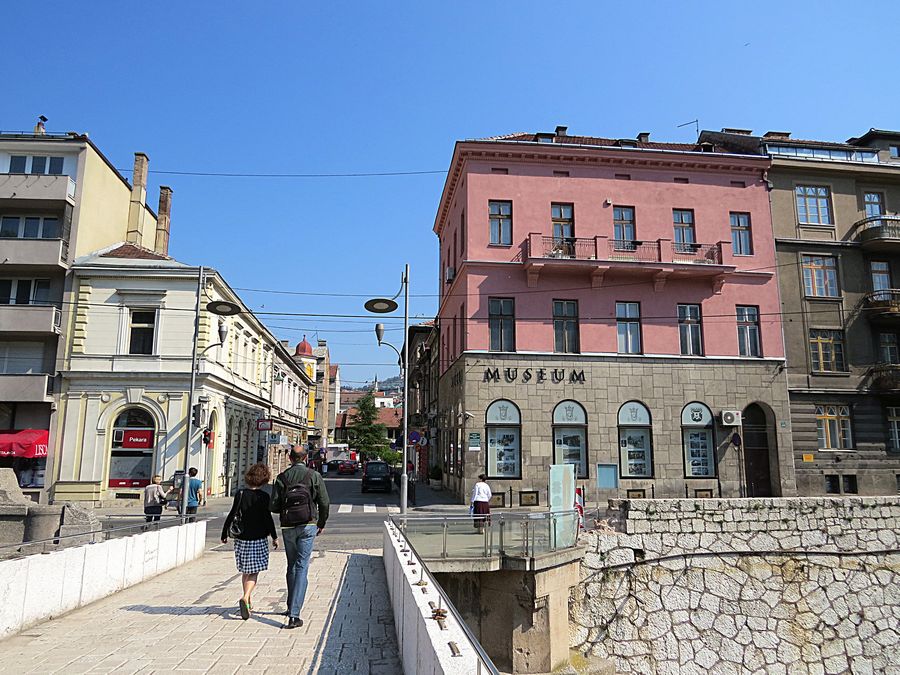
Sarajevo 1878-1918 Museum that is focused on the 4 decades of Austro-
Hapsburg rule here and also on the story of how Gavrilo Princip's
assassination of Archduke Franz Ferdinand, the Hapsburg heir, took place
right on this corner and led to WWI.

Turkish style Latin Bridge over Miljacki River.
The bridge's name comes from Ottoman times, when
this area was populated by many Catholics who said Mass in Latin.
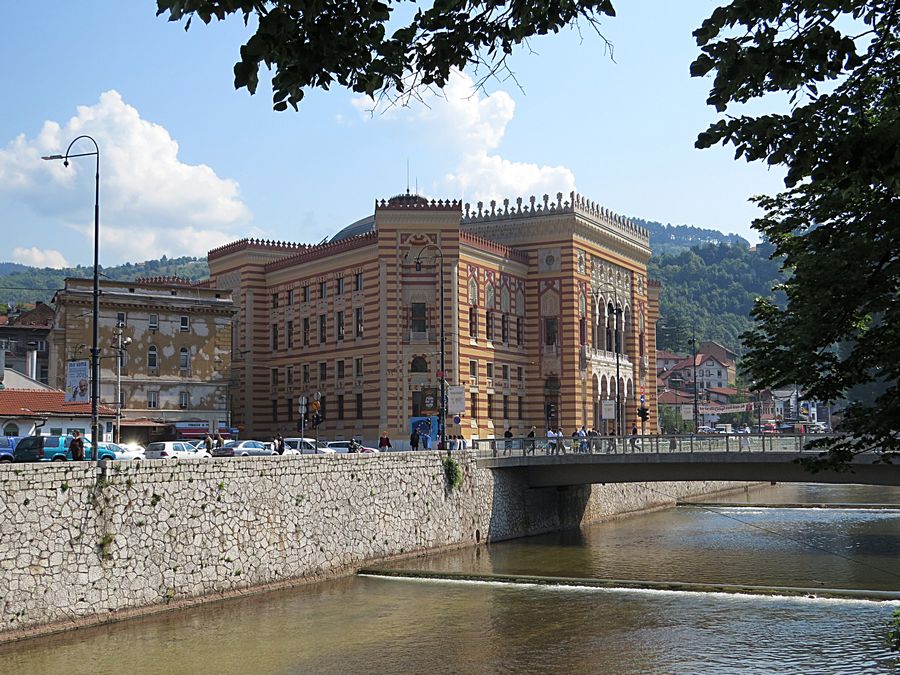
The yellow and brown striped building is the old City Hall, an example of
Austrian style architecture from the 40 years of Hapsburg rule. It was
converted into the City Library. The building was destroyed by shells in
1992 and has been recently restored as a museum. Note the building to
the left that still has war damage.

Coppersmiths' Street in the Ottoman Old Town area, where craftsmen
still do their work hammering out works of art made out of copper.

A coppersmith talked to us about his work.
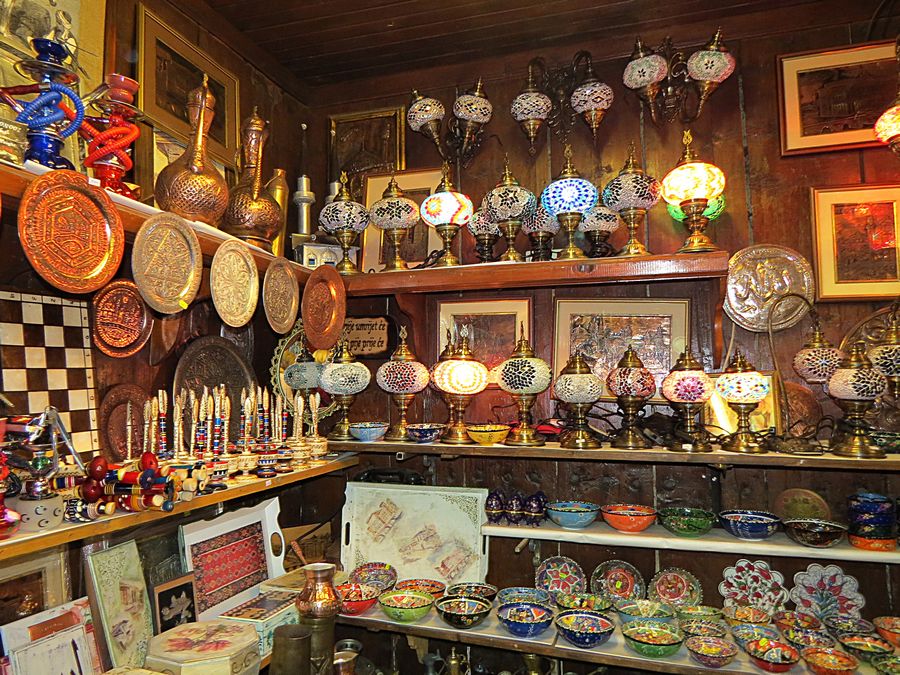
Some of the items he had for sale in his shop.

Two guys smoking at a coffee house near Coppersmith Street.
We stopped here for a coffee/tea break.

Bascarsija Square in Ottoman Old Town, nicknamed Pigeon Square,
due to the numerous pigeons that are always there and that attract
children who want to watch and play amongst them.
The fountain (small faucet) is legendary. It is said that visitors who
drink water from this fountain will return to Sarajevo.

Near Pigeon Square in the Ottoman Old Town area.

Throughout the trip, we saw many groups of school kids touring famous sites,
since they were doing end of school year outings in late
May and early June. Note these kids are enjoying gelato.

Street scene with Bascarsija Mosque in the background. It is closed
to the public.

Closer view of Bascarsija Mosque near Pigeon Square
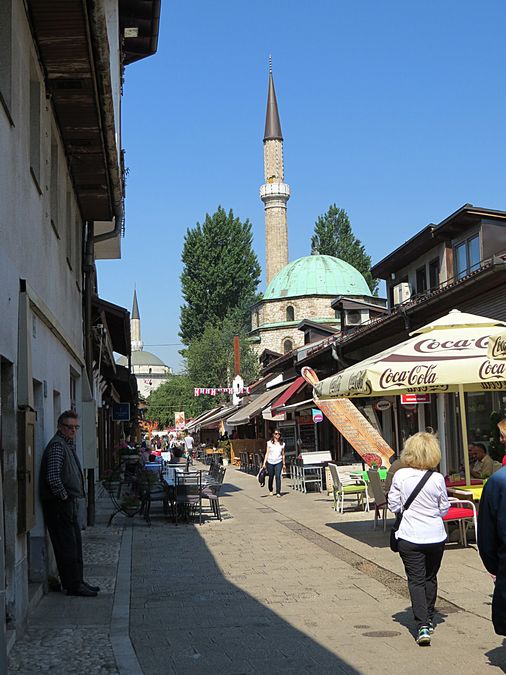
Pedestrian street scene in Old Town
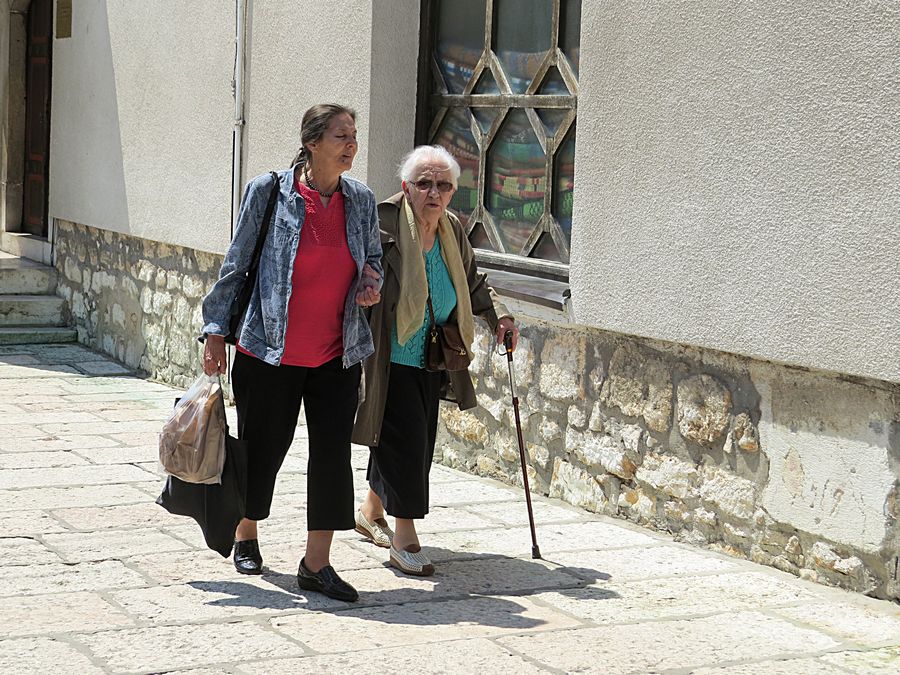
Two women walking near Gazi Husrev-Bey Mosque

Inside the Gazi Husrev-Bey Mosque. Gazi Husrev-Bey was a wealthy
aristocrat who donated lots of money to the local Muslim community
in the early 1500s. His tomb is next to the mosque.
Upon entering a mosque, it's customary to remove one's shoes
and place them on the rack in the entryway. This is done out of respect
and to avoid dirtying the interior prayer hall floor. Prayer halls have no chairs
or benches,
only row upon row of carpets, aligned to face Islam's holy city
of Mecca in Saudi Arabia.

Near the front of the worship space in a mosque is a structure called the
Minbar,
the raised steps from which the imam delivers the sermon at the Friday
prayer.
Near the Minbar stands a roofed niche in the wall called the Mihrab.
This indicates the direction of the Ka’aba, the cube-shaped building in Mecca
that is the most sacred site in Islam. All mosques are built facing the Ka’aba,
and Muslims should always face in this direction while praying.
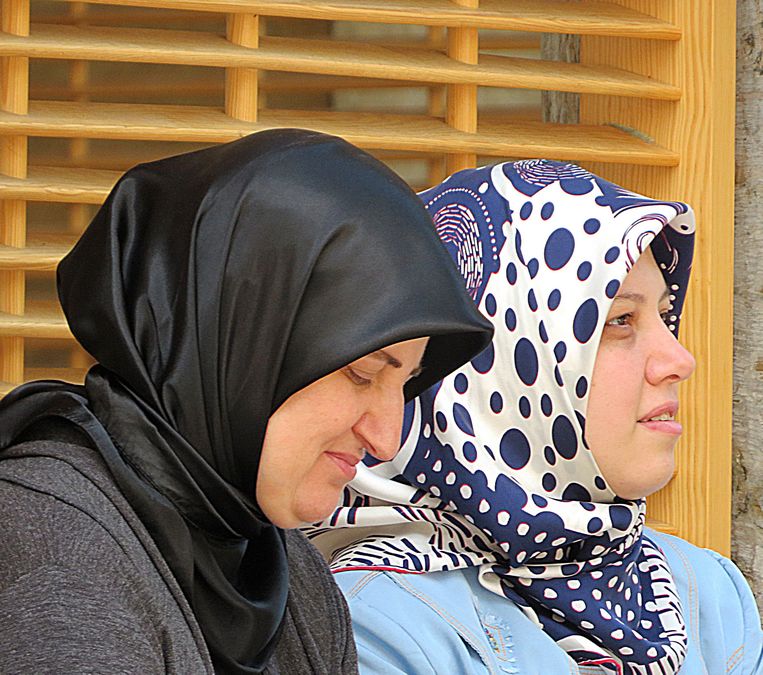
Two Muslim women sitting outside the mosque.
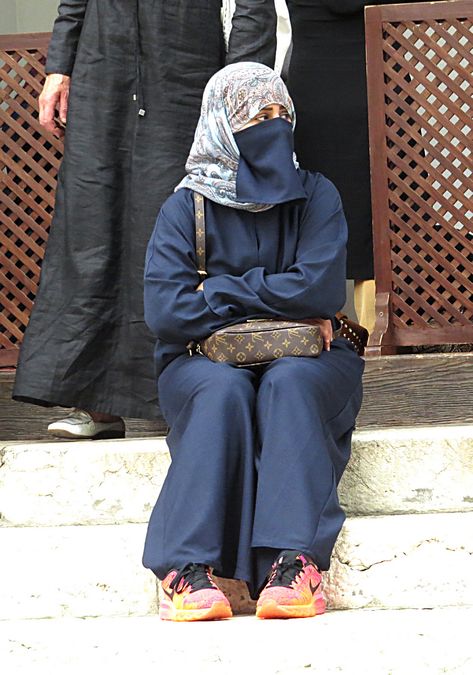
We saw very few women that covered their face.

A boy standing outside the mosque
Link to Page Nine - Sarajevo Continued and Sarajevo Tunnel
Pat's Home Page